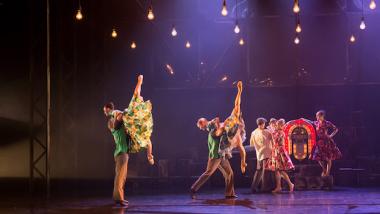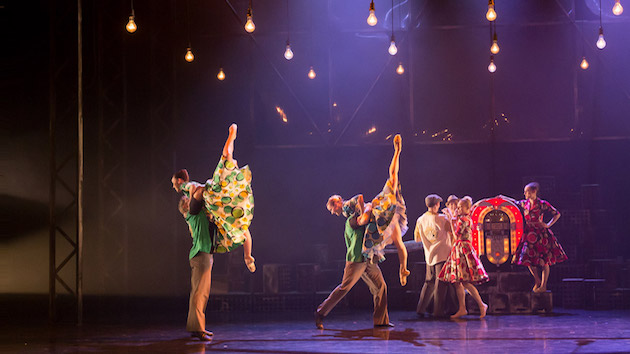
This may be your lucky Friday. Cal Performances has some tickets (maybe even a lot of tickets) available for the Scottish Ballet’s stunning production of A Streetcar Named Desire. You are hereby urged to hurry to Zellerbach Hall to see it for yourself; to glory in the precision and beautiful line of the company and choreographer Annabelle Lopez Ochoa’s inventiveness, under the artistic direction of Christopher Hampson, a product of the Royal and English National ballets.
So gorgeous and right are the dancers and choreography, so well-structured is director Nancy Meckler’s libretto — based on Tennessee Williams’s 1947 Broadway smash — and interpretation, that even this critic’s disagreements about the way it was rewritten will strike most viewers as trivial. So let’s just state them upfront and be done with it.
The full impact of Williams’s stage play (and Elia Kazan’s superb 1951 film starring Vivien Leigh as Blanche DuBois, Marlon Brando as Stanley Kowalski, and Kim Hunter as Blanche’s sister, Stanley’s wife Stella) relies on the gradual revelation of Blanche’s past. Not only is she fragile, alcoholic, delusional, and a tease, but something never before revealed has happened to make her that way. In this ballet version, the secret’s spoiler is launched early in Act I. So at the end of Act II, when Stanley Kowalski, her brother-in-law, unleashes his sadistic wrath, it robs the ballet’s climax of its cumulative horror. Some will say the ballet’s conclusion is amply shocking anyway, but that doesn’t quite address the questions about what level of faithfulness is owed to such a classic.
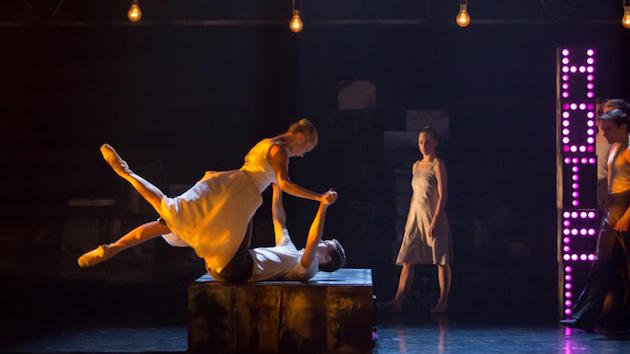
So what might be the alternative? Director Meckler told me that she thinks flashbacks onstage in dance are ineffective. Maybe one has to weigh the flashback’s shortcomings against changing Williams’s narrative and thus diminishing the intended impact of his story. Ah, so easy to be the one posing the pesky questions rather than solving them.
However, this will likely not extinguish anyone’s pleasure at seeing such a well-crafted, and yes, still poignant and hair-raising full-length ballet.
The score (on recording) is by Peter Salem, a frequent collaborator of Meckler with a long resume in music for film, theater, and TV. It succeeds well in evoking the shadowy past of the old, mossy DuBois homestead, the heat and simmer of New Orleans and the characters we encounter there, and side excursions, most welcome, into lively swing, augmented by relevant jukebox hits of the era, including the recurrent “Paper Moon.”
There are triumphs of stagecraft and costuming as well. The design is credited to Niki Turner, with lighting design by Tim Mitchell. There is one set, with things like light bulbs flown in and out, or crashed out (that mansion) and noisily broken as dust flies. Small crates stand for various furnishings and are assembled into beds and platforms. There’s even a bowling alley; the dancers, in bowling shirts, launch imaginary balls toward the audience. Sound effects and keenly observed gestures provide the rest.
The busy anonymity of everyday life in New Orleans is symbolized by dancers walking randomly in simple streetwear across the stage, or clustering in groups that make Blanche feel increasingly removed from reality.
And some of the choreography hints that we are all surrounded by a fence of unreality; mechanistic gestures and geometric marching platoons of men and women set up a powerful collective sense of alienation.
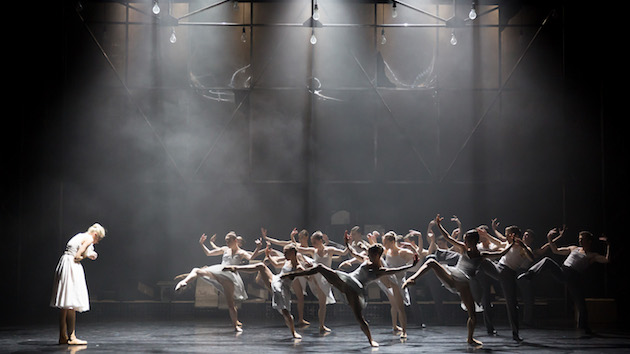
Early on in the first act, we see Blanche’s wedding to Alan, (Victor Zarallo) whose uncertainty about his sexuality (his lover is danced by Constant Vigier) will lead to his suicide and Blanche’s mania, pushed along by the sudden deaths of her parents and the loss of her family home for financial reasons that are muddy in the ballet version. Money is one more thing for the hard-up Stanley to blame on Blanche.
Blanche here is two hauntingly identical looking dancers, both blonde and of amazing technical prowess: Blanche and Young Blanche, respectively. Wednesday and Friday, it’s Eve Mutso and Aisling Brangan; Thursday, it’s Araminta Wraith and Roseanna Leney. Blanche’s premarital, youthful sexuality is shown via her legs, gorgeously and blithely exposed in deep arabesques. When her world becomes confused and she takes refuge in promiscuity and drink, those legs are concealed beneath filmy, colorful robes and wrappers as she fantasizes about her indiscriminately taken lovers’ intentions toward her. They include sailors, a rich cowboy, even a little messenger boy. And then there’s Stanley’s poker pal Mitch (Luke Schaufuss), charmingly clumsy but smitten, who puts up with Blanche’s prudish veneer until she is outed for her past by Stanley (Christopher Harrison), who fears she’ll take him away from Stella (Sophie Laplane, Wednesday and Friday; Bethany Kingsley-Garner on Thursday). Stanley also senses Blanche’s scorn for his blue-collar background.
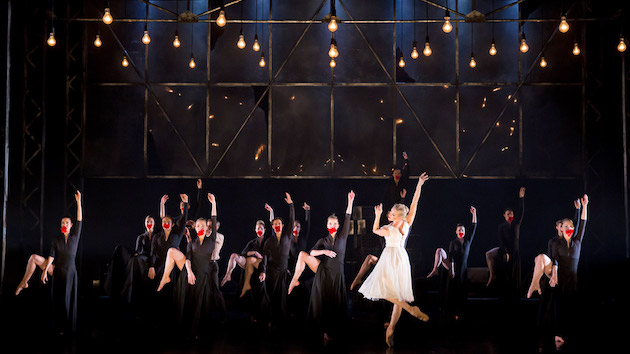
As Stella, Laplane perfectly, shiveringly enacts the mixture of fear and passion Stanley elicits (today, we would simply say she’s an abused woman). The most shocking moment may be when Stanley beats his pregnant wife and then they physically reconcile. His bestial nature, however, isn’t fully realized until he finally rapes Blanche while Stella is in the hospital delivering their baby. It’s a physical moment — not nakedly exposed, but this is certainly not a show for the kiddies. That, and Mitch’s abandonment, and her past all conspire to send her, gripped by a white-clad attendant, to a mental hospital.
En route, Blanche fantasizes a field of red flowers; these are enacted by the entire corps, dressed in black, standing still, each holding a large red bloom in their mouths. The scene recalls Blanche and Stella’s encounter with a gypsy flower seller on the street in New Orleans, calling “Flowers for the dead!”
It looks like each has blood coming out of their mouth; it’s a jarring vision, reminiscent of the darkest moments in the Japanese dance form called Butoh. For this Streetcar, it is conclusively, searingly, the end of the line.
Correction: This review originally identified choreographer Annabelle Lopez Ochoa as Laurie Ochoa.

